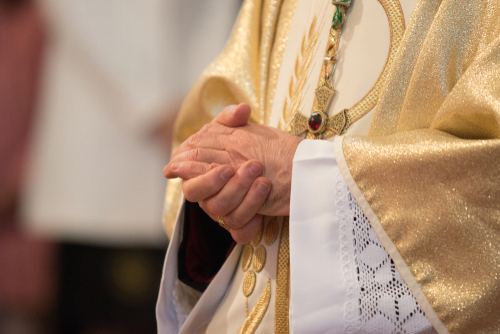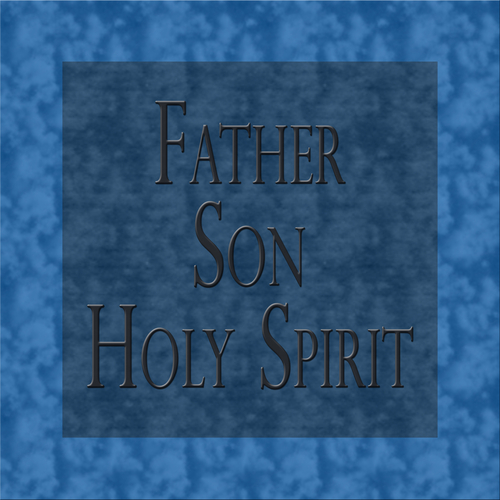
If you have studied or thought about the relationship of Christian churches to each other, then you may have come across information about the ecumenical movement. The word ecumenical comes from Greek, where it originally meant universal or representing the whole world. In the late 16th century, the word came into English as a church related word meaning something that represented all of the Christian world. Ecumenical relationships are relationships between different kinds of Christian churches that are striving for greater unity with each other.
Contours of a Movement
When you hear the word ecumenical paired with the word movement, it is generally referring to a movement towards greater Christian unity that began in the 20th century. Although you will likely get differing opinions as to when this movement really started, depending on whether you are reading history from a Protestant, Catholic, or Orthodox perspective, certain events tend to stand out when you begin to learn about the ecumenical movement. One of those events was the 1910 World Missionary Conference in Edinburgh, Scotland, which included 1,200 delegates from most major Protestant denominations in North America and Northern Europe. These delegates discussed a number of things, including greater co-operation among Protestant churches in missionary and other endeavors.
Some of the ideas and relationships formed at Edinburgh eventually led to the formation of the World Council of Churches in 1948, which is currently headquartered in Geneva, Switzerland. The organization includes about 350 different denominations or branches of Christians, including Anglican, Orthodox, and various Catholic and Protestant bodies. The Roman Catholic church doesn’t officially take part, but they do send observers to meetings, and there have been more efforts at Protestant-Catholic dialogue in recent years. The idea behind all of these ecumenical endeavors is to foster a deeper sense of unity among Christians and to seek ways that different Christian churches can come together to work in ministry and mission. For some churches, especially churches with deep historical and liturgical roots, the reconciliation of various kinds of Christian denominations has some important theological ramifications.
Opposition to Ecumenism

Ecumenism is certain to come with a vast array of benefits for the church denominations that practice it, their many members, and even much of the broader world with which they all associate, however, there are also some true points of opposition that hold firmly against ecumenism. One such force of opposition to ecumenism comes from the Roman Catholic Church, as touched on above. The Roman Catholic Church’s opposition to ecumenism with other churches is rooted deeply in a number of old decrees and historic documents.
The Mortalium Animos of 1928 by Pope Pius XI is one such decree from which that opposition comes. This decree essentially declared the idea that various churches can have different approaches to Christianity as a falsehood. From this document alone, many Roman Catholic practitioners refute the concept of ecumenism, and such, do not take part. This stance, however, is in direct opposition to the Roman Catholic decrees Nostra aetate and Unitatis redintegratio, which did recognize the value of ecumenism and unity of the many churches of Christ therein.
There are also some in the Methodist and Lutheran faiths who do not agree with the concept of ecumenism. In the Methodist denomination, this opposition stems from the opinion that ecumenism is not grounded in the core principles of the Methodist faith. In addition, a major publication of the Methodist faith, written by Randall Balmer in 1998, declared that false unification efforts like ecumenism blurred confessional and theological differences and that this was not good for the faith.
In the Lutheran faith, there comes even greater opposition to ecumenism. Much of this is due to the stance of the Lutheran Church–Missouri Synod (LCMS), a major figurehead of the church. As such, the official stance of the LCMS is that the worship of God through ecumenism or even inter-faith activities is not in alignment with the teachings of the Bible. The American Association of Lutheran Churches, another major figurehead of Lutheranism, also strongly opposes and condemns ecumenism as a sort of wrongful mingling with cults and other incorrect religious approaches.
Those who worship as Reformed Christians, likewise, oppose ecumenism, because it is viewed as a distraction from true faithful practices. Most non-eastern Orthodox Christians also oppose all forms of ecumenism. Here, it is seen as a mechanism that substantially weakens the core principles of their faith.
The Trinitarian Formula

For those who do agree with ecumenism, one of the key binding components of that belief is that of the Trinitarian Formula. The Trinitarian Formula is the belief that God is actually composed of three forms: the Son, the Father, and the Holy Spirit. The formula also strongly distinguishes a difference in each of these three forms of God.
The Trinitarian Formula is largely based on the statement made by Jesus after arising from death in which he stated “Go, therefore, and make disciples of all nations, baptizing them in the name of the Father, and of the Son, and of the Holy Spirit.” This statement was noted in Matthew 28:19 of the Bible. It is a major cornerstone of belief throughout many of the Christian churches today.
The Week of Prayer for Christian Unity
Another hallmark of the ecumenical movement is the Week of Prayer for Christian Unity. As its name suggests, this is a week-long period in which all ecumenical-believing Christians are encouraged to devote much prayer and thought to the concept of global Christian unity. This “week”, however, lasts for eight days and is referred to as an octave. The Week of Prayer for Christian Unity runs from the Christian calendar days of Ascension Day to Pentecost, or January 18 – 25.
The use of this particular time period for the ecumenical event is significant. Ascension Day is believed to be the day that Jesus went to Heaven after his physical death. Pentecost marks the day in which it is believed that the Holy Spirit descended upon the apostles of the Bible. The whole event is annually coordinated and observed by the World Council of Churches and its member churches.
Ecumenical Symbology

As covered above, the Trinitarian Formula is one of the major symbols of ecumenism. As a visual symbol, this concept is shown as a uniting triangle with God in the center and the Father, the Son, and the Holy Spirit composing the triangle’s corners. This visual representation of the formula is also known by its more traditional name, the Scutum Fidei Diagram. Beyond the Trinitarian Formula, a number of other symbols are designated as important representations of ecumenism and the church unity therein.
The Christian flag is another important symbol of the ecumenical movement. This flag represents the concept of having no divisions or denominations, but just a belief in Christianity and Christ. The Christian flag was originally designed by the Wesleyan denomination of Christianity but was later adopted as a key symbol of ecumenism itself.
The flag is a white flag with a blue square and a red cross within that single square. The large white area represents peace and harmony, while the blue square represents an unclouded sky, or heaven. The red cross in the middle of the blue square then represents Christianity and Christ’s blood.
The final and perhaps center-most symbol in ecumenism is that of the ecumenical symbol. This symbol pre-dates the World Council of Churches but is used by the council and most other ecumenical observers as well. The ecumenical symbol itself is a portrayal of the Christian church as a boat, in the form of a cross, drifting afloat in the sea of the world. While encapsulating the basic theme of ecumenism, this symbol also pays homage to the story of Jesus calming the storm on Lake Galilee, an important event noted in the Bible.
Additional Examples of Ecumenism
While ecumenism is primarily noted by way of the World Council of Churches and its participating denominations, there are many other proofs of ecumenism at work in the world today. One such example of this unity of Christianity can be seen in the numerous cooperatives of Christian colleges, universities, and their sports activities. There are many such cooperatives, united under the single cause of cooperation through ecumenism. Some of these organizations include:
- The Council for Christian Colleges & Universities
- The American Association of Christian Colleges and Seminaries
- The Association of Christian Colleges and Theological Schools
- The Transnational Association of Christian Colleges and Schools
In addition to educational cooperatives under ecumenical practice, a number of charity groups also exist under that same uniting umbrella. Organizations like the National Christian Foundation, Christian Charities USA, the Salvation Army, the Ecumenical Association for Housing, and the International Fellowship of Christian and Jews are chief among these. Beyond these types of ecumenically-united organizations, there also exist many other types of clubs, worship groups, and social groups of the same beliefs.
Differences in Ecumenical and Inter-Faith Relationships
Sometimes there is confusion over the idea of ecumenism because people tend to think it means greater co-operation among all religions (Christian and non-Christians). However, that is really best described by the term inter-faith. Inter-faith dialogue and activity might take place, for example, among Christians, Jews, and Muslims. All of these groups would readily admit that they have very different world views, beliefs, and faith traditions, but sometimes they come together for the sake of certain projects, finding common ground where they can. Ecumenism is intra-faith rather than inter-faith. It has to do with Christians who have distinct historical and traditional differences coming together. Churches in full communion with each other recognize each others’ ministers and can receive communion in each others’ churches.
Additional Resources on Ecumenism
For those seeking to learn even more about the concept of ecumenism, there are many authoritative resources with which further inquiry is highly recommended. The following organizations are chief among these.
The World Council of Churches
As previously covered, the World Council of Churches is perhaps the foremost authority on all things related to ecumenical belief. First established in 1948 in Amsterdam, Netherlands, this organization of churches unites 350 individual church denominations together under the single flag of ecumenism. The council consists of a central governing body to that cause and also sponsors a broad range of events, publications, and many other resources that are always free to the public.
The Anglican and Eastern Churches Association
The Anglican and Eastern Churches Association, also known as AECA for short, is a tenured ecumenical organization that was originally founded in 1864 by John Mason Neale and numerous other notable Christian figures. This group offers many resources to anyone interested and has also published a number of key ecumenical publications over the years including the noteworthy Koinonia: The Journal of the Anglican and Eastern Churches Association. Based in the United Kingdom, anyone can join as a member to AECA, but membership is not required for access to many of its resources or general inquiries.
The Fellowship of Saint Alban and Saint Sergius
Finally, the Fellowship of Saint Alban and Saint Sergius is yet another key organization today that is dedicated to the Christian-uniting concept of ecumenism. This association is named for Saint Alban and Saint Sergius. Alban is revered as the first British Christian martyr, while Sergius is noted as one of the most holy of saints through the Russian Orthodox Church. This fellowship offers a wide array of resources available to the public including conferences and other social events, numerous publications, grant opportunities, and much more. Membership is another option, and numerous individual branches make up the body of its membership.
In the New Testament, Jesus spoke of the importance of unity among Christians. Almost all Christian churches place at least some emphasis on this issue, some more than others. Those who have come together in a more formal way are generally spoken of as being part of the ecumenical movement.
Related Resources: